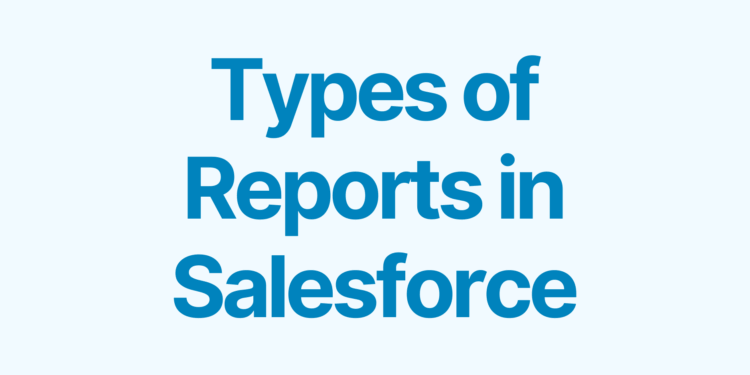Embark on a journey into the realm of Salesforce analyst reports, where data meets insights and decisions are shaped. Dive into the intricacies of this vital business tool that holds the key to understanding market dynamics and forecasting trends.
Explore the components, methodologies, and importance of Salesforce analyst reports to unravel their significance in today's competitive landscape.
Introduction to Salesforce Analyst Report
A Salesforce analyst report is a comprehensive analysis that provides insights into the performance, trends, and outlook of Salesforce as a company. It focuses on various aspects such as financial data, market share, customer base, product offerings, and competitive landscape.
These reports are crucial for businesses as they help stakeholders, investors, and decision-makers to understand Salesforce's position in the market, assess its growth potential, and make informed decisions regarding investments, partnerships, or strategic initiatives.
Examples of Data Included in a Salesforce Analyst Report
- Financial Performance: Revenue growth, profit margins, operating expenses, and cash flow.
- Market Share: Salesforce's position compared to competitors in the CRM software market.
- Customer Base: Number of customers, retention rates, and customer satisfaction metrics.
- Product Offerings: Details on Salesforce's various products, their adoption rates, and new releases.
- Competitive Landscape: Analysis of key competitors, market trends, and strategic moves within the industry.
Components of a Salesforce Analyst Report
In a Salesforce analyst report, several key components are typically found to provide a comprehensive overview of the company's performance and market position.Financial Data:Financial data plays a crucial role in a Salesforce analyst report as it helps investors and stakeholders gauge the company's financial health, profitability, and growth potential.
This data includes revenue, expenses, profit margins, cash flow, and other financial metrics that are essential for making informed investment decisions.Market Trends:Market trends are reflected in a Salesforce analyst report through detailed analysis of the industry landscape, competitive dynamics, customer preferences, and technological advancements.
By identifying and interpreting market trends, analysts can assess the opportunities and challenges facing Salesforce and make recommendations for future growth strategies.
Key Components of a Salesforce Analyst Report
- Financial Performance Metrics: Revenue, profit margins, expenses, cash flow, and other financial indicators.
- Market Share Analysis: Salesforce's market position compared to competitors and industry trends.
- Customer Acquisition and Retention: Analysis of customer base growth, churn rate, and retention strategies.
- Product and Service Offerings: Evaluation of Salesforce's product portfolio, innovation, and competitive differentiation.
- Strategic Partnerships and Alliances: Assessment of key partnerships that impact Salesforce's market presence and growth.
Methodology for Salesforce Analyst Reports
When it comes to creating Salesforce analyst reports, a thorough methodology is crucial to ensure accuracy and reliability. Here's how data is gathered, analyzed, and interpreted:
Data Gathering Methodologies
One common method used to gather data for Salesforce analyst reports is through surveys and interviews with industry experts, Salesforce users, and stakeholders. This primary research helps collect firsthand insights and opinions.
Data Analysis and Interpretation
- Quantitative data is often analyzed using statistical tools like Excel or SPSS to identify trends, patterns, and correlations within the data.
- Qualitative data, such as feedback from interviews, is analyzed through thematic analysis to extract key themes and insights.
- Data visualization tools like Tableau or Power BI are utilized to present findings in a visually appealing and easy-to-understand manner
.
Tools and Software for Creating Reports
- Salesforce Analytics Cloud: This platform allows analysts to access and analyze Salesforce data to create insightful reports and dashboards.
- Microsoft Excel: Widely used for data analysis and reporting, Excel offers various features for manipulating and visualizing data.
- Tableau: A powerful data visualization tool that helps create interactive and engaging reports for better decision-making.
Importance of Salesforce Analyst Reports
Salesforce analyst reports play a crucial role in influencing decision-making within organizations by providing valuable insights and data-driven recommendations. These reports help organizations make informed choices regarding their Salesforce strategies and investments.
Influencing Decision-Making
Salesforce analyst reports help organizations in forecasting sales and revenue by analyzing market trends, customer behavior, and competitive landscape. This forecasting enables companies to make data-driven decisions on resource allocation, target setting, and overall business strategy.
Benefits of Strategic Planning
- One benefit of using Salesforce analyst reports for strategic planning is the ability to identify growth opportunities and potential risks in the market. By leveraging these reports, organizations can align their Salesforce initiatives with their overall business objectives.
- Another benefit is the optimization of Salesforce processes and workflows based on the recommendations provided in the reports. This helps organizations streamline their operations, improve efficiency, and enhance customer satisfaction.
- Moreover, Salesforce analyst reports aid in benchmarking performance against industry standards and competitors, allowing organizations to stay ahead of the curve and adapt to changing market dynamics effectively.
Comparison of Salesforce Analyst Reports
When it comes to Salesforce analyst reports, there are various types available in the market, each with its own unique features and focus. Let's delve into the comparison of these reports to understand their differences and similarities.
Types of Salesforce Analyst Reports
- Market Share Reports: These reports provide insights into the market share of Salesforce compared to its competitors, highlighting Salesforce's position in the industry.
- Financial Analysis Reports: These reports focus on Salesforce's financial performance, including revenue, profitability, and investment outlook.
- Customer Satisfaction Reports: These reports gauge customer satisfaction levels with Salesforce products and services, offering valuable feedback for improvement.
Formats and Structures of Salesforce Analyst Reports
Salesforce analyst reports can vary in terms of format and structure, depending on the focus and target audience. Some reports may be more visually appealing with charts and graphs, while others may be text-heavy with detailed analysis.
Differences in Industry-Specific Analyst Reports
- Healthcare Industry: Analyst reports for the healthcare industry may focus on Salesforce solutions tailored for healthcare providers and compliance with industry regulations.
- Retail Industry: Reports for the retail sector may emphasize Salesforce's capabilities in customer relationship management and e-commerce integrations.
- Financial Services Industry: Analyst reports for financial services may highlight Salesforce's security features and scalability for financial institutions.
Outcome Summary
In conclusion, Salesforce analyst reports serve as compasses guiding businesses through turbulent waters, offering a strategic advantage in decision-making and planning. As you delve deeper into the world of Salesforce analytics, remember that knowledge is power, and data is the fuel that propels success.
Answers to Common Questions
What is the purpose of a Salesforce analyst report?
A Salesforce analyst report aims to provide businesses with valuable insights into their performance, market trends, and competitive landscape.
How do Salesforce analyst reports influence decision-making?
These reports play a crucial role in shaping strategic decisions by offering data-driven recommendations and highlighting areas for improvement.
What tools are commonly used to create Salesforce analyst reports?
Popular tools for generating Salesforce analyst reports include Tableau, Power BI, and Salesforce's own reporting features.






